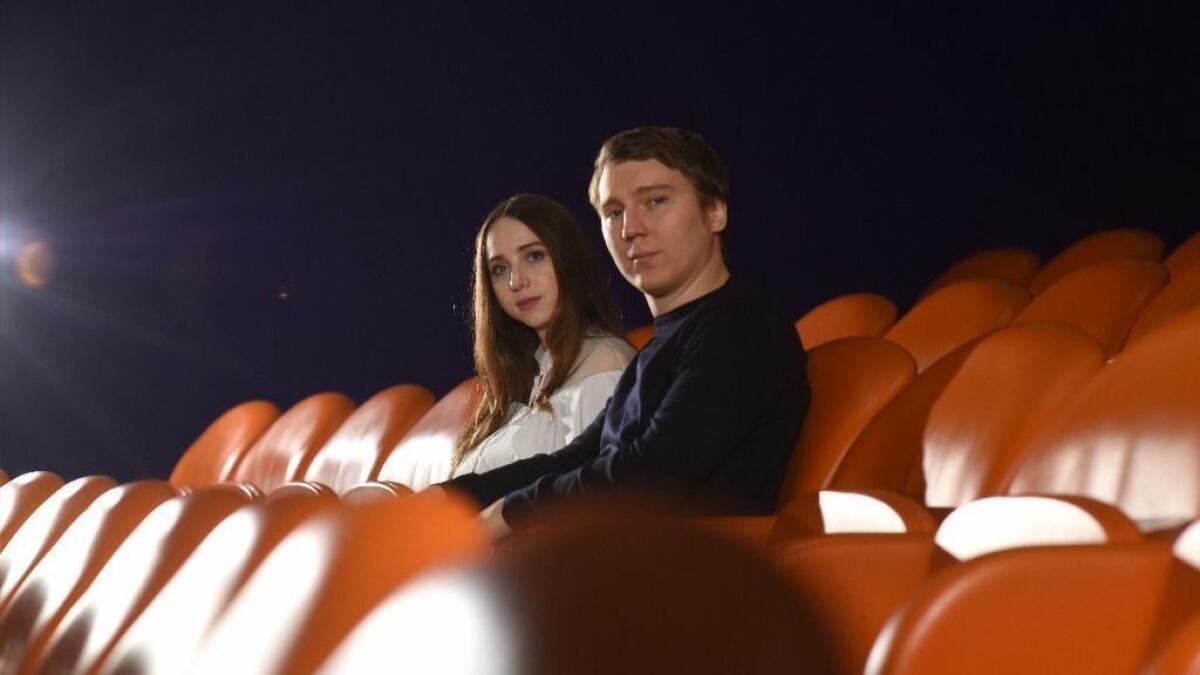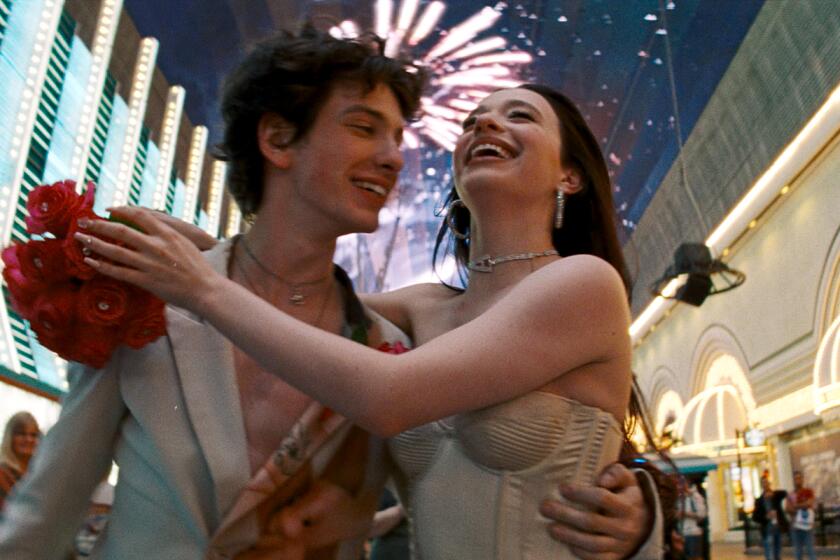One book, two writers, one couple: How Paul Dano and Zoe Kazan adapted ‘Wildlife’ and survived

- Share via
Zoe Kazan: We first read Richard Ford’s novel “Wildlife” in 2011 — and have re-read it so often Paul has the page count memorized: The fictional Brinson family falls apart and begins to piece itself back together in a lean 177 pages. Set in Montana in 1960, the book follows the Brinsons’ story through the eyes of the teenage son, Joe.
Paul Dano: Reading the novel, I felt a deep personal attachment. I saw myself, my parents, my grandparents; I saw family as one of our greatest loves and, therefore, sometimes the source of great pain. I wondered if it could be the foundation of a film for me to direct. Eventually, Zoe and I decided to option the book ourselves, wanting to retain as much control as possible.
I thought I might hire a writer to adapt the book. But after daydreaming for a few months, an image came to me: a way to end the film, different from the novel’s ending. That scene, that image, made me think I should adapt the book myself. In early 2013, I took a swing at a first draft.
Kazan: When he shared it with me, I thought it resembled a treatment more than a script — there wasn’t much traditional structure or dialogue. As I gave him notes, we started to fight. After an hour, I suggested that it might be simpler — and better for our relationship — if I rewrote him instead. That kicked off a three-year process.
Dano: Often I couldn’t finish writing a scene until I could see it playing in my head — the image, the cut. Much of the film lives in the space between the lines, in silences, the composition, the actors’ inner life — and I tried to be true to that on the page. But these drafts were ultimately too spare. Zoe was able to maintain my aesthetic spirit but still invite the reader into the script.
Kazan: Paul did most of the initial work, gleaning treasure from the novel, inventing action where there is only internal reflection in the book. He gave Joe a friend, so we could see him turn away from his childhood to try to fix his family. I came back through with an eye to structure and character arc. The first thing I did was cut up his draft and lay scenes out on our living room floor, to rearrange them.
Dano: After that, we traded drafts back and forth. We never wrote at the same time. Time was a friend. One of us would go off to act in something, the other would take the reins of the script. In his great book “On Writing,” Stephen King advises writers to put their first drafts away for six to eight weeks, and then edit again with fresh eyes. We had that pattern built into the natural structure of our lives.
Kazan: One challenge was that the book is written like a memory piece, in the first person from Joe’s perspective, looking back on his childhood. How could we retain that, without using voice-over, or losing the fullness of the parents’ lives? Also, in the book, Joe appears passive — his main action is to observe. We had to weaponize his watching and give him a more active journey toward independence.
Dano: Most of my process as a first-time writer was asking “why?” Why am I making this? Why would this character behave this way? Much like I do as an actor, I tried to turn the material over inside myself and filter that through the characters. Slowly, the script began to shed skins and become itself.
Kazan: I want to shout out to our editor Matt Hannam. Before we shot the movie, we thought we had gotten the script down to its purest, sparest form; on an independent film budget, every scene has to do the most work it can to justify the cost of each location and the time spent. Through the editing process, though, we learned that there was more to shed — which was exciting, after so many years spent writing. We could still be surprised.
Dano: When I first wrote Richard Ford about the option, he said, “My book is my book, your picture is your picture.” This gave us a great sense of permission. And perhaps as a sign of a fruitful collaboration, Richard, Zoe and I now all have a hard time distinguishing what is from the book, from Zoe, or from myself.
More to Read
From the Oscars to the Emmys.
Get the Envelope newsletter for exclusive awards season coverage, behind-the-scenes stories from the Envelope podcast and columnist Glenn Whipp’s must-read analysis.
You may occasionally receive promotional content from the Los Angeles Times.








